Blackmagic launches 4K global-shutter EF-mount camera, affordable Micro Four Thirds video camera
posted Tuesday, April 9, 2013 at 11:57 PM EDT
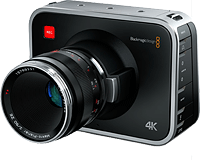
Last year, Australian video tech company Blackmagic Design scored one of the surprises at the 2012 National Association of Broadcasters show, launching a relatively compact 2.5K ultra-high definition video camera with a Canon EF-compatible lens mount. A year later, and the company shows it still has some tricks up its sleeve, announcing not only a followup to that camera, but also a second camera based on a Micro Four Thirds lens mount.
You didn't have to look too closely at your crystal ball to predict the Blackmagic Production Camera 4K, which its creator describes as the "world's most portable 4K digital film camera". It's clearly an evolution of the existing camera, and it's a product Blackmagic needed to make if it wanted to compete at the top level of ultra high-def video.
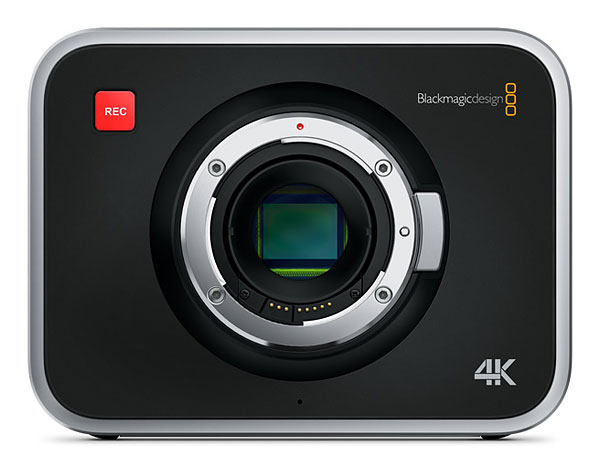
The Production Camera 4K sports a 16:9-aspect sensor that's nearly 80% larger than that in the earlier camera, and boasts about 2.5 times as many pixels. (Blackmagic refers to it as a Super 35 sensor, although it's rather smaller than a Super 35 frame.) A very important difference from its predecessor for fast-paced movies is the use of a global shutter that prevents rolling shutter "jello". Effective resolution is 3,840 x 2,160 pixels, and frame rates from 23.98p to 30p are available at full resolution. By dropping the resolution to Full HD (1080p) and interlacing, you can increase the frame rate to a maximum of 59.94i. Dynamic range falls slightly from the 13 stops claimed on the previous camera to a 12-stop range in the new model.
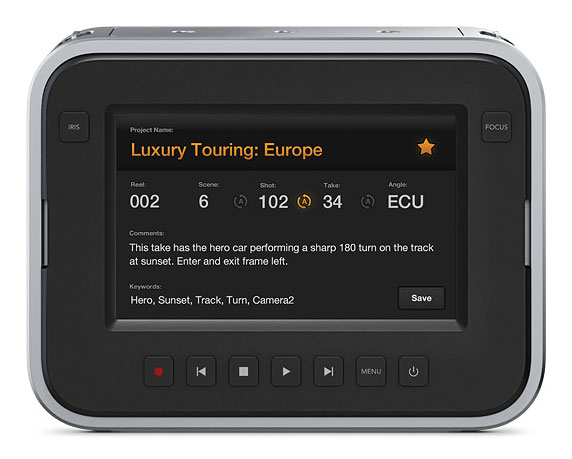
Other options are largely similar to the earlier model. The Production Camera 4K is compatible with EF and ZE-mount lenses, and has automatic, electronic aperture control via a dedicated iris button, as well as a focus peaking function. On the rear panel, a large five-inch display with 800 x 480 pixels caters to framing and reviewing of movies, and also serves as an input device courtesy of a capacitive touchscreen overlay. Sound is captured via an integrated, monaural microphone, or via two 1/4-inch balanced jacks that can accept microphones or line inputs. There's also a 3.5mm stereo headphone output, and a new 6G-SDI audio/video output in place of the previous HD-SDI output. This last allows for 10-bit 4:2:2 video with two-channel, 48kHz, 24-bit audio. Blackmagic has also retained the Thunderbolt and USB 2.0 Mini-B ports from the earlier camera, as well as a 2.5mm LANC remote terminal that can control recording, iris, and focus remotely.
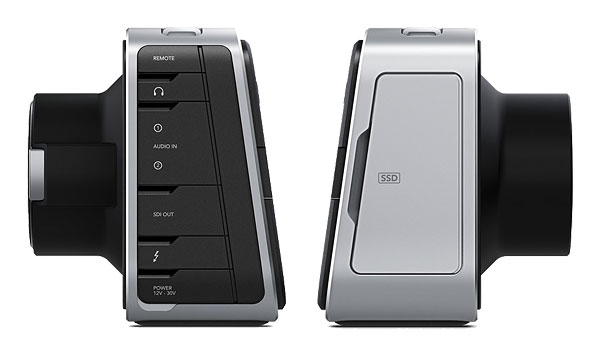
The Blackmagic Production Camera 4K still stores data on a removable 2.5-inch solid state drive formatted with an exFAT or Mac OS Extended file system. The Avid DNxHD codec is no longer supported, and you're given a choice of either losslessly-compressed CinemaDNG Raw or lossy Apple ProRes 422 (HQ) output at either 4K or Full HD resolution.Power comes from a built-in lithium polymer battery rated as good for 90 minutes of capture, or an 11-30V DC input. The software bundle includes Blackmagic Media Express and DaVinci Resolve Lite.
Pricing for the Blackmagic Production Camera 4K is set at around US$4,000, with availability expected at the end of July 2013.
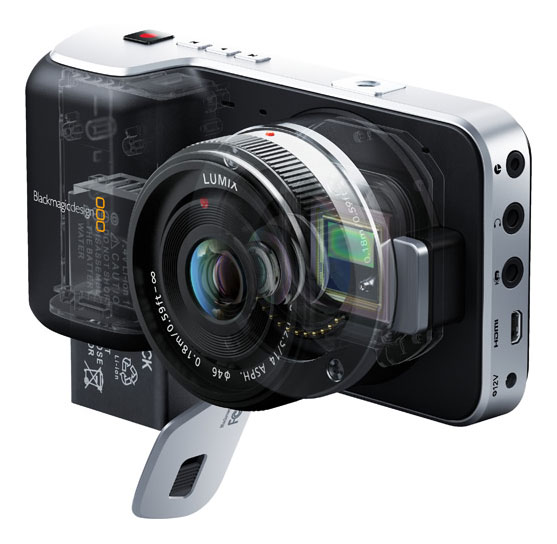
And then there's the Blackmagic Pocket Cinema Camera, an announcement that comes from a little further out in left field. It's an affordably-priced Micro Four Thirds camera, and offers lossless high-definition video capture, but with one doozy of a catch -- a sensor smaller than that used in Nokia's 808 PureView smartphone. In fact, it's just slightly smaller than a Super 16mm film frame, and one-quarter the size of that in a typical Micro Four Thirds camera, which means a 3x focal length crop. When mounted on the Pocket Cinema Camera, even the Panasonic Lumix G Vario 7-14mm f/4.0 Asph. lens will have a 21mm-equivalent wide angle.
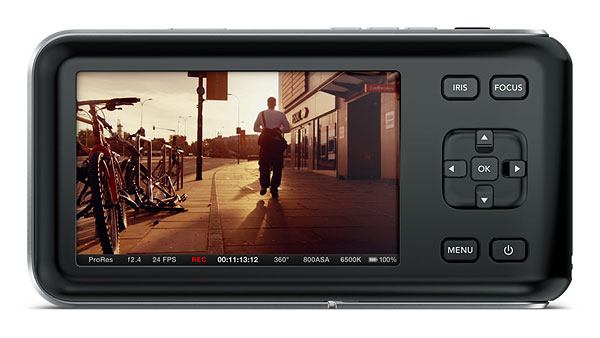
If you're willing to live with that, though, you get a Full HD video camera that's coat-pocket friendly, offers the same choice of lossy Apple ProRes 422 (HQ) or losslessly-compressed CinemaDNG Raw footage at 1,080p30 or below, and has a manufacturer-claimed 13 stops of dynamic range. It also includes a 3.5-inch, 800 x 480 pixel LCD panel, although it lacks the touch-sensitivity of the Production Camera 4K. Video is stored on exFAT or HFS+ formatted SDHC or SDXC cards, sound comes from a built-in stereo mic or a 3.5mm mic jack, and power is courtesy of a proprietary EN-EL20 lithium-ion battery pack with one-hour battery life or a 12-20V DC input. Other connectivity includes a Type-D Micro HDMI output, a 3.5mm headphone jack, a USB 2.0 data port, and a 2.5mm LANC remote terminal.
Priced at just US$1,000, the Blackmagic Pocket Cinema Camera ships from late July 2013.
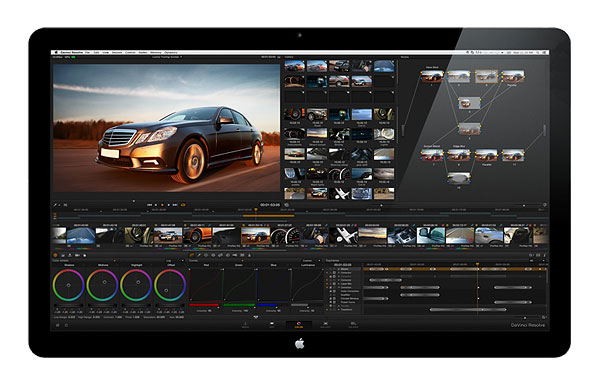
Not surprisingly, Blackmagic has a raft of other announcements for the NAB show, as well. These include DaVinci Resolve 10 grading / color-correction software, a new mini monitor and recorder in the Decklink series, support for upcoming releases of Adobe's Premiere Pro and After Effects, ultra high-def recording support in HyperDeck Studio Pro, availability of products supporting the 6G-SDI video interface, and more.